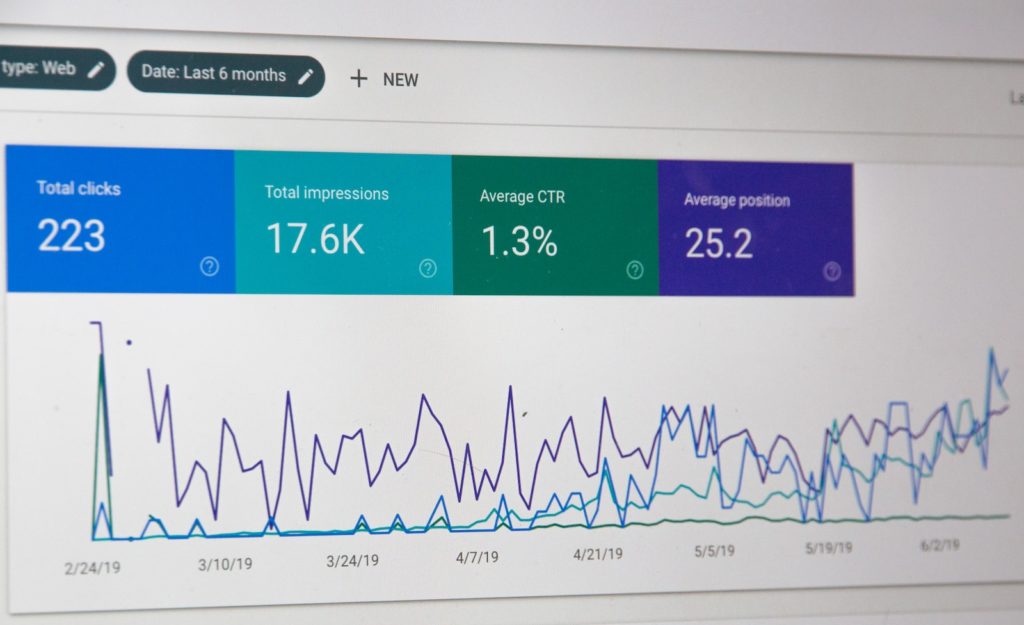Affiliate marketing has become a popular way for people to earn money online. As a performance-based marketing strategy, affiliate marketers promote affiliate products and earn commissions for every sale made through their unique affiliate links. This type of marketing is known as affiliate marketing.
What is affiliate marketing?
To start with affiliate marketing, you need to find an affiliate program or network that aligns with your niche and audience. Once you have joined the program, you can start promoting the available offers by sharing your unique affiliate links on various channels such as blogs, social media, email marketing, and paid advertising.
Most affiliates use their blogs or websites to promote products related to their niche. They add affiliate links within their content which redirects readers to the product page. Social media platforms like Facebook and Instagram are also great places to share affiliate links with followers who might be interested in the promoted product.
As an affiliate marketer, it’s essential to optimize your business by using tools such as link cloaking, tracking, and analytics. These tools help you track clicks on your links and monitor sales made through them. You can then analyze this data to determine which strategies work best for your business and increase your overall earnings.
Affiliate networks provide access to multiple programs under one roof which makes it easier for affiliates to manage different campaigns at once.


Getting started with affiliate marketing
Choose a Niche and Affiliate Program
Starting an affiliate marketing business can be overwhelming, especially if you are new to the industry. However, choosing a niche that you are passionate about and has high demand in the market is a great way to start. This way, you will enjoy creating content related to your niche, and it will be easier for you to promote affiliate products.
Once you have selected your niche, research and choose an affiliate marketing program that offers products or services related to your niche. There are various affiliate programs available on the internet, but it is essential to choose one that aligns with your niche and target audience.

Promote affiliate products
As an affiliate marketer, promoting affiliate products is your primary goal. You can do this by creating content that includes affiliate links such as product reviews, tutorials, comparisons, and more. It would help if you were creative when creating content so that it stands out from other affiliates promoting similar products.
Join an affiliate network
Joining an affiliate network can help you find multiple merchants in one place easily. Some of the most popular networks include ShareASale, CJ Affiliate (formerly Commission Junction), Amazon Associates (for physical goods), Clickbank (for digital goods), etc.
Affiliate networks offer various benefits such as access to exclusive deals and offers from merchants within their network and easy tracking of commissions and sales across multiple merchants.
Use Affiliate Marketing Tools
To track your sales progress in terms sales generated from promotions or optimize your campaigns for better results conversion rates; there are several tools available for affiliates such as Google Analytics, ClickMeter, and Pretty Links.
Google Analytics is a free tool that allows you to track your website’s traffic and analyze user behavior. You can use it to monitor the performance of your affiliate marketing campaigns by tracking the number of clicks, impressions, conversions, etc.
ClickMeter is a paid tool that helps you track links’ performance and optimize them for better results. It provides detailed reports on clicks, conversions, revenue generated from each link/offer/campaign.
Pretty Links is another popular tool used by affiliates to shorten their affiliate links and make them more visually appealing. It also allows you to track clicks on your links and provides detailed reports on the same.
Choosing your platform and niche
Choosing the right niche for your affiliate marketing business is crucial to your success. A niche is a specific market or audience that you will be targeting with your content, products, and services. The first step in choosing a niche is to identify your target audience. Who are they? What are their interests, needs, and pain points? Once you have identified your target audience, you can choose a niche that aligns with their interests and needs.
Selecting the right platform for your niche
There are many different platforms available including blogs, social media channels like Facebook or Instagram, YouTube channels or podcasts.
If you’re interested in starting a blog, there are many free blogging platforms available such as WordPress.com or Blogger.com. You can also purchase hosting and domain name to create self-hosted blog using WordPress.org which provides more flexibility and customization options.
Social media channels like Facebook or Instagram can be great platforms for promoting affiliate products because they allow you to connect directly with potential customers. You can post pictures of the products you’re promoting along with links to buy them on Amazon.com.
YouTube channels are also popular among affiliate marketers because they allow you to create video content that showcases the product(s) in action. This type of content can be very engaging and effective at persuading viewers to make a purchase.
Building a personal brand to establish credibility and trust
Building a personal brand is crucial to establishing credibility and trust with your specific audience. This means creating a unique identity that sets you apart from other affiliate marketers in your niche.
To build a personal brand, you should focus on creating high-quality content that showcases your expertise and authority in your niche. You should also engage with your audience on social media channels and respond to their comments and questions.

Paid traffic vs organic traffic
There are two main approaches: paid traffic and organic traffic. Paid traffic refers to the use of paid ads or methods to drive traffic to your website, while organic traffic is generated through content marketing and search engine optimization (SEO) efforts.
Online marketing tools such as Google Ads and social media advertising can be effective for driving paid traffic. However, they require a budget and ongoing affiliate marketing spend. While paid traffic can provide quick results, organic traffic is often more sustainable and cost-effective in the long run for affiliate marketing.
However, generating organic traffic does take time and effort upfront. You need to create quality content that’s optimized for search engines and build backlinks to your website in order to rank higher in search results. This can be a slow process, but the long-term benefits are worth it.
Scaling and Promotion
Use content marketing to promote affiliate products
One of the most effective ways to promote affiliate products is through content marketing. By creating high-quality content that educates and informs your audience about the benefits of the products you’re promoting, you can gain influence and establish yourself as an authority in your niche.
To get started with content marketing, you’ll need to identify the topics and keywords that are relevant to your niche and target audience. Then, create blog posts, articles, videos, or other types of content that provide valuable information and insights related to those topics.
Make sure your content is well-written, engaging, and informative. Use visuals like images or infographics to break up text-heavy sections and make it easier for readers to digest your message.
Once you’ve created your content, share it on social media platforms like Facebook, Twitter, LinkedIn or Instagram. Use relevant hashtags so that people who are interested in your topic can find it easily.
Leverage Social Media for promotional activities
Social media is a powerful tool for affiliate marketers looking to promote their products. You can use social media platforms like Facebook, Twitter, Instagram or LinkedIn to share affiliate links with your followers.
When sharing links on social media platforms, make sure they are relevant to the platform’s audience. For example, if you’re promoting a product related to health and wellness on Instagram then use hashtags such as #healthylifestyle #fitnessmotivation etc., which will help reach out more people who are interested in these topics.
Building an email list
One of the most effective ways to build a relationship with your target audience is by creating an email list. This can be done using email marketing tools like Mailchimp, Aweber or Constant Contact. These tools will help you to reach out to potential customers and build a relationship with them.
When creating an email list, it’s important to keep in mind that quality is more important than quantity. You want to attract subscribers who are genuinely interested in what you have to offer, rather than just collecting as many email addresses as possible.
How much money can you make?
Affiliate marketing can be an incredibly lucrative way of making money, but it’s important to understand that the income potential varies greatly depending on a number of factors. Your earnings will largely depend on the amount of effort you put into promoting your affiliate links and generating sales. It’s not a quick buck scheme, but with consistent work, you can earn a significant passive income.
The amount of commission you receive per sale will also impact your affiliate income. Some programs pay higher commissions than others, so it’s important to research and choose the best ones for your market. For example, some programs may pay 10% commission while others may offer up to 50% or more.
Conversion rates are another important factor to consider when calculating potential earnings. If you’re promoting products that don’t make sense for your audience or market, you’ll likely see lower conversion rates and less revenue. It’s crucial to choose products that align with your niche and target audience.
It’s also worth noting that affiliate marketing is not a get-rich-quick scheme. It takes time, effort, and patience to build a successful affiliate business. However, once established, it can provide a significant source of passive income.
In fact, some affiliate marketers have been able to earn six-figure incomes through their efforts. For example, Pat Flynn from Smart Passive Income has generated over $3 million in affiliate commissions since starting his blog in 2008.
How much do beginner affiliate marketers make?
Affiliate marketing is a lucrative business model that has gained popularity in recent years. It involves promoting other people’s products and earning a commission for every sale made through your unique affiliate link. But how much can beginner affiliate marketers realistically expect to make? Let’s explore this topic further.
Examples of beginner affiliate marketer earnings
While there is no set amount that beginner affiliates can expect to earn, there are examples of successful affiliates who started from scratch and built their way up.
One such example is Pat Flynn, who started his affiliate marketing journey in 2008. In his first year, he earned just $7,906.55 from affiliate marketing. However, he continued to work hard and focus on providing value to his audience. By 2014, he had earned over $2 million in affiliate commissions.
Another example is Michelle Schroeder-Gardner, who started her blog Making Sense of Cents in 2011. She began monetizing her blog through affiliate marketing and by 2016 was earning over $50,000 per month from affiliates alone.
These examples show that while earnings may start low for beginner affiliate marketers, there is potential for significant growth with time and effort.




